#queer horror literature and film and the modern era
Text
look maybe this is cringe or something but god what i wouldn't give to be a professor who teaches film, literature, and a few courses on the intersection of digital culture around media through a sociological and creative lens
#is fandom studies cringe? maybe so but also with the rise of fandom culture becoming less insular and more mainstream#we need to treat it as a mainstream topic and that includes not only examining the history there#but discussing the inherently messy elements of it#let me write a goddam thesis on migratory slash fandom or what it means to be transformative when it comes to work#fandom is a blessing and it is a curse and i want to teach it#and then ill teach a course on like. fucking horror movies or some shit#queer horror literature and film and the modern era#tbh id also teach a bitching course on the mystery box show - let me teach a course on lost's legacy on modern television or something#just let me get to stand in front of a room and academically analyze shit and read papers and engage with people#yeah ill write my silly little novels on the side but also....
8 notes
·
View notes
Text
There are probably a million other (and better) lists out there like this, but for Pride Month and my own documenting purposes, here are the LGBTQ+ "classics" I've come across over the past several years of reading. My taste tends toward older literature and slash, so most of them center on gay stories and are somewhat dated in terms of general societal attitudes, but I know there are many other classics out there that are just as good and hope to get around to them eventually.
To be clear, my definition of "classic" is how often they crop up in various "best of" lists I've found on the internet (including this one), and who recommends them, as well as how long they've been around. For example, many of the titles here are based on the renowned gay author Edmund White's list of "representative freaks," which I haven't yet read through myself. (His books are interesting too, although they contain a lot of difficult themes, and are not always fiction or centered on gay characters). They are not necessarily recommendations, as I struggled with some or found them not so memorable, but I wanted to take note of them nonetheless.
The rest I've listed are books that I've just happened across, usually at a library or through a friend. I haven't included the YA books because in my mind they exist in their own category (although I'm happy to rec them to anyone who cares). Most, if not all, are written by authors who identify as LGBTQ+. And lastly, they are all in English because it's my first language, although I'm sure there are more I haven't yet discovered that originated in different languages.
So here they are, in no particular order:
Tales of the City by Armistead Maupin - I loved the first book, although I haven't yet read the series that followed. It represents all sorts of queer lives and experiences in 1970/80s San Francisco, including a truly memorable trans character.
Tipping the Velvet by Sarah Waters - a picaresque love story set in Victorian England. Not slash, although there is some gender-bending between the lesbian characters.
A Home at the End of the World by Michael Cunningham - The Hours was a much more popular book of his, but this was the first book to introduce me to the idea of a polyamorous/throuple situation, including two gay characters.
Memorial by Bryan Washington - a searching look at a modern interracial gay relationship and its strengths and flaws.
Gay Bar by Atherton Lin - not fiction, but a very engaging sociological read, about the history of gay bars and the author's present-day experience of them.
The Merry Spinster by Mallory Ortberg/Daniel M. Lavery - I read this at the beginning of my deliberately queer literature journey and liked the dark gender-swapped versions of fairy tales it contains. The author transitioned while writing this book, supposedly.
"Brokeback Mountain" by Annie Proulx - heartbreaking but good. Gods help me if I watch the film again.
City of Night by John Rechy - I didn't manage to finish this one because the style is very much of the Beatnik era, but I may attempt it again. It inspired the script for the film My Own Private Idaho (another queer classic).
"Howl" by Allen Ginsberg - also challenging to read unless you're in a stream-of-consciousness poetic mood. He does have mind-stopping imagery though, and was considered quite risqué for his time.
Burning Your Boats by Angela Carter - dark, sensual, borderline horror. Not all slash, but inclusive of different sexual orientations. I particularly like her retellings of fairy tales in this collection.
London Triptych by Jonathan Kemp - a breath-taking (and spicy) narrative that interweaves three different eras of gay culture.
The Picture of Dorian Gray by Oscar Wilde - probably the best known classic of the 19th century, although I don't remember if it's overtly queer or just contains subtext. Haven't read it in years.
Maurice by E.M. Forster - honestly it's been ages since I read this one too. I love everything else by this gay author though, so I will probably reread it some day.
Call Me By Your Name by André Aciman - I tore right through reading this one after watching the film. A simple yet engaging coming-of- age story. I haven't read the sequel yet but will do so eventually.
The Spell by Alan Hollinghurst - I wasn't quite sure what to make of this one. Basically none of the characters are especially likable, although the story reveals interesting dynamics between them and their sexual escapades. I'm curious to read more by this author.
Middlesex by Jeffrey Eugenides - this book rocked my world when I was a teenager. I've since come to question how representative it is of the intersex experience, seeing as it was written by a seemingly heterosexual cis man, but it was the first time I'd ever been introduced to such a rich and unusual character in literature, and she stayed with me for a long time after (re)reading.
As for the future, here are some titles I intend to read (among many more):
The Price of Salt by Patricia Highsmith
On Earth We're Briefly Gorgeous by Ocean Vuong
Stone Butch Blues by Leslie Feinberg
A Little Life by Hanya Yanagihara
Goodbye to Berlin by Christopher Isherwood (story that the musical Cabaret was based on)
Orlando by Virginia Woolf
Pageboy by Elliot Page
Nevada by Imogen Bonnie
Here's hoping I've managed to add a few of these to my personal list by the time Pride Month rolls around again. 🤠 And of course, if anyone else has books/stories to recommend, do share!
5 notes
·
View notes
Text
Sensor Sweep: Howard Days, Derleth Christmas Card, Tolkien Society Seminar
Robert E. Howard (Orthosphere): Considering that he died at thirty, Howard’s literary accomplishments can only impress. Stylistically, he operates at a level many ranks above that of the typical pulp writer. His vocabulary includes a rich lode of Latin and Greek derivations and likewise of English archaisms. Brought up, from age thirteen, in the small and isolated Texas town of Cross Plains, in Callahan County, in the middle of the state, Howard almost miraculously overcame a lack of educational resources and acquired a reserve of knowledge in history, literature, myth, and folklore that would shame the modern holder of a college degree in any of those subjects.
Science Fiction (Wasteland & Sky): Ever since the Pulp Revolution started, the main kickback has always been from the older set who think it exists to erase their past when it exists for the exact opposite. The whole reason the movement sprung up was because of those who began looking into the past and were finally discovering what Fandom was actually doing was rewriting and destroying what came before. They were doing it for their own gain, chasing out anyone who wanted what they had mere years earlier.
Gaming (Monster Hunter Nation): I talked about this in the last blog post about the Yard Moose Mountain Mega Shooting Weekend, where I had shooters from all over the country coming to my place for three days of pistol training, about how one night I ran a one off RPG session for 17 of them, and by some miracle it actually turned out good. When this got posted about on Facebook right after, a whole bunch of gamers asked how the hell do you run a game that big and not have it suck, so here’s how we pulled it off.
Tolkien (Breitbart): “The Tolkien Society has announced that the theme of its 2021 Summer Seminar, held July 3 – 4, will be ‘Tolkien and Diversity,’” reports the Daily Wire. Here’s a sampling of what Woketard Tolkien Fanboys can expect — you know, those whose lives are so empty, this is how they choose to spend a weekend: Gondor in Transition: A Brief Introduction to Transgender Realities in The Lord of the Rings. Pardoning Saruman?: The Queer in Tolkien’s The Lord of the Rings. The Lossoth: Indigeneity, Identity, and Antiracism.
Robert E. Howard (Adventures Fantastic): This past weekend was the 2021 Robert E. Howard Days. After last year’s cancellation, it was a much needed gathering. And while many of the regulars weren’t able to attend, the number of first time attendees made up the difference. The gift shop sold out of almost all the books they had in stock.
Awards (DMR Books): John Bullard is a good guy doing Crom’s work over at the Robert E. Howard Foundation (REHF). The other day, John sent me the list of REHF award recipients for 2020 and 2021, which were announced at Howard Days in Cross Plains a week ago. I should note that Corona-chan canceled last year’s Howard Days, so the 2020 awards were handed out this year. Check ’em out below. I’ll post my comments below that.
Fantasy (Goodman Games): Linwood Vrooman Carter was born on June 9th, 1930 in St. Petersburg, Florida. In the august company of his fellow Appendix N authors, Lin Carter is a figure both of high esteem and some controversy. As an editor and critic, he is indispensable, most notably for his role in editing the landmark Ballantine Adult Fantasy series (BAFS), which ran from 1969-1974 and re-introduced such luminaries as Lord Dunsany, William Hope Hodgson, and Clark Ashton Smith to the fantasy-reading public.
Pulp (Pulpfest): Today we celebrate the 125th birthday of TIME magazine’s “dean of science fiction writers,” William Fitzgerald Jenkins — a.k.a. Murray Leinster. An avid inventor who also happened to have a knack for writing wonderful speculative science fiction, his career spanned much of the 20th century.
Fiction (Realms of Night): In the early 1980s, Zebra Books published a four “issue” anthology series bearing the title Weird Tales and the stylized logo familiar to fans of the pulp greats who were published in The Unique Magazine. Weird Tales has been called the magazine that never dies, but most would agree it’s had a largely beleaguered existence since the late 1950s. It has appeared at various times in a newsstand digest format, a full-size traditional magazine format, and — perhaps the most successful post-Golden Era run of the magazine — a very nice perfect bound magazine during the 1980s and early 1990s.
Comic Books (National Review): How can you not know who Neal Adams is? He gave the world the modern Batman and Joker! Revived Green Arrow and the X-Men! Created the first Black superhero for DC, the John Stewart Green Lantern!
Robert E. Howard (Dark Worlds Quarterly): “The Fire of Asshurbanipal” (Weird Tales, December 1936) by Robert E. Howard is the point at which adventure fiction and horror meet. The story was found in a trunk with a note to be sent to Farnsworth Wright in case of the author’s death. This is according to Glenn Lord who published the first version of the story in The Howard Collector #16 (Spring 1972). Lord gives us a little preamble with:
RPG (Modiphius): We’re delighted to announce that Conan The Adventurer arrives in print! This latest sourcebook for the Conan Adventures in an Age Undreamed Of RPG is available now on Modiphius.net and coming soon to a retailer near you. Here are the details on this fascinating new sourcebook which is also available in PDF format on Modiphius.net and DriveThruRPG.com.
Comic Books (Arche-arc): Upon completing my viewing of the FALCON AND WINTER SOLDIER streaming series, I’m moved to comment on some of the parallels between Kevin Feige, founder of the Marvel Cinematic Universe, and Stan Lee, the founder of Marvel Comics in its crucial sixties incarnation.
Comic Books (Irmonline): I have gone into the first series run of What If? by Marvel from 1977 to 1984, with 47 issues. The title series continues to find numerous use over the years with Marvel. There is a second series that starts in 1989 and ends in 1998, with 115 issues including a #0. After that, Marvel releases a few mini-series, or one-shot stories, that go under the title What If?.
Fiction (DMR Books): I like Vikings, specifically Viking fiction. I certainly have an interest in the history, and the sagas make for dense but fascinating reading, but my first love is pure, heart-pounding adventure. I remember first learning about Vikings back in grade school, when we briefly covered the Viking explorations of the New World, the discovery of Greenland, Vinland and Viking settlements on the Canadian east coast long before that Italian explorer came along and spoiled everything.
Gaming (Game Rant): Skyrim is packed full of references to the works of H.P. Lovecraft. Its last DLC, Dragonborn, saw the inhabitants of the isolated town of Raven Rock fall under a mysterious trance-like state that was leading them to build strange obelisks, with only the faintest memory of doing so. While some The Elder Scrolls quests are full of surface-level Lovecraft allusions like this, the series’ metaphysical lore makes the connection explicit. The same can be said for Obsidian’s upcoming first-person fantasy RPG, Avowed.
Cinema (Talking Pulp): Beyond the Black Rainbow. I really dug Panos Cosmatos’ Mandy, a film that sort of came out of nowhere a few years ago that in some ways, boosted and reignited Nicolas Cage’s acting career. I don’t think that it was long-lasting but his role in Mandy proved that the dude can still bring it and excel when given the right part in a movie. Cosmatos only has one other film and, at this point, it’s already over a decade old. It’s been in my queue since I saw Mandy, however, so I felt like checking it out was long overdue.
Star Wars (Tor): The Star Wars movies are notable for spinning off into a wide variety of other media and related products, including TV shows, books, comic strips, comic books, radio dramas, toys, housewares, and other products. Since the series was largely modeled on the old Flash Gordon and Buck Rogers serials, this is no surprise, as both of those properties were also adapted into a variety of formats and merchandise, something George Lucas certainly noticed and emulated. Today, I’m going to look at two of the first Star Wars tie-in books, Splinter of the Mind’s Eye and Han Solo at Stars’ End.
Pulp (Fantasy Literature): The Universe Wreckers initially appeared as a three-part serial in the May, June and July 1930 issues of Hugo Gernsback’s Amazing Stories magazine, the first publication to dedicate itself solely to science fiction. This legendary magazine started publishing in 1926, the same year that Hamilton’s very first story, “The Monster-God of Mamurth,” appeared in Weird Tales, when its author was 22. The Universe Wreckers would then, sadly, go OOPs (out of prints) for over 80 years, until Haffner Press resurrected it for inclusion in one of its mammoth Hamilton anthologies.
Gaming (Arkhaven Comics): Last month, IGN decided that the hill to die on this week was Palestine. They printed some article on giving aid to Palestinian Children* that I didn’t care about and didn’t read because I haven’t read anything from IGN for years and I wasn’t starting now. However, IGN Israel did read it and screamed at the corporate owners. Ziff-Davis roused itself from its dreamy lassitude and made the accurate but surprising decision that this article had nothing whatsoever to do with gaming or popculture and spiked it.
Fiction (Allied Authors): Years ago on this Allied Authors website in “A Derleth Christmas Card,” I touted an unexpected find I made in a local antique store: a series of unique Christmas cards issued by Wisconsin’s famous author — and close friend of Allied Authors — August Derleth. Unexpected, because even in his home state, Derleth’s proverbial backyard, such finds are fewer and farther between, with his fame continuing to grow.
Comic Books (AE Index): An excellent representation of EC original art in an inexpensive format. Along with full-page scans of original art, this features an introduction by Annie Gaines Ashton, exhibit introduction, and twelve short essays or personal recollections from noted EC fans. There are also four double-page enlargements of art, three successful and one blurry. The scans are mostly clear with a few soft or blurry issues.
Review (Rough Edges): There’s no sophomore jinx for the second issue of MEN’S ADVENTURE QUARTERLY. It remains one of the most impressive, beautifully designed publications available today. The theme this time around for this oversized trade paperback is Espionage. It features a lot of vividly reproduced artwork, including both covers and interior illustrations, from a variety of the Men’s Adventure Magazines published in the Fifties, Sixties, and Seventies, along with seven stories (mostly fiction, even the supposedly true ones) from those magazines.
Cinema (Neotextcorp): When Rhodesian writer Daniel Carney’s unpublished novel The Thin White Line ended up in the hands of producer Euan Lloyd, it fit perfectly with his ambitious plans to make a grand-scale star-studded war adventure film in the vein of Where Eagles Dare. The novel toyed with the rumor about a mysterious 1968 plane landing in Rhodesia allegedly carrying a mercenary force, and when screenwriter Reginald Rose adapted it for film, director Andrew V. McLaglen was hired to bring it to life based on a decisive recommendation from the great John Ford. The cast was loaded with heavy-hitting names such as Richard Burton, Roger Moore, Richard Harris, Hardy Krüger, Stewart Granger, Jack Watson, Frank Finlay and many others.
Sensor Sweep: Howard Days, Derleth Christmas Card, Tolkien Society Seminar published first on https://sixchexus.weebly.com/
0 notes
Text
Story adaptation
Notes: 11/12/19 BA2a story adaptation session 3
The divided self: Id, ego, super-ego
Shame Culture and the idea of modern surveillance
Main characters
Mr Utterson
Mr Enfield
Mr Hyde
+
The unknown doctor
The unknown girl
The girls family
(Story told so far from Mr Uttersons POV)
Protagonist: person who is most changed and affected by the events taking place in the story,
// Jekyll
New characters in chapter 2
Poole
Dr Hastie
C2 brief summary
Mr Utterson comments that the will suggests madness and disgrace (homosexuality, illegitimate child?)
Utterson visits Dr Lanyon hoping for fresh information
Utterson has dreams/night terrors about Jekyll and Hyde
Becomes intrigued by Hyde and hopes to see him to uncover his identity
They meet- feelings of tension and unease
Vague conversation
Utterson visits Jekyll but is relived he is away
Hyde must be ‘the ghost of some old sin, the cancer of some concealed disgrace’
Mr Uttersons character
- As innocent as he appears
- Represses natural instincts
- Reserved
- Takes a while to warm up to people
- Suspecting/untrusting of others
Mr Enfields character
- ‘as empty as a church’ – symbolic?
Mr Hydes character
- Pale
- Dwarfish
- Small
- Light-footed
- Husky whispering broken voice
- Plainly dressed
Jekyll originally creates hyde to avoid social shame, hyde becomes out of control
Jekyll cannot reconcile ‘an impatient gaiety of disposition’
Victorian man was haunted constantly by an inescapable sense of division.
Private life vs public life
Do we have a self-imposed underground?
Race, Gender, Sexuality
(Social norms, rules, consequences)
Before the 19th century we had very different views on emotion
Appetites – base desires
Sentiments – voluntary, associated with moral behaviour
English words related to embarrassment: discomfiture, awkwardness, mortification, humility, uneasiness, self-consciousness, shame
How does the way language is used affect the way we perceive concepts and emotions?
The way in which phrases are used can adjust how we view the concept, for example in English we use the term ‘falling in love’ which can make you look at the concept of love in a different way as ‘falling’ is very descriptive and can be related to intensely becoming infatuated with someone.
How the English language is structured varies from other European and Latin derived languages …
Social emotion is created by culture// can be quite dark
How one tweet can ruin your life/ Jon Ronson ted talk
Freudian psychology
Id: instincts
Primitive, unorganised, illogical, unconscious, ‘es’
Ego: reality
Mature, reasonable, intermediary between the id and the external world, able to defer gratification
Super-ego: morality
Internalisation of cultural rules
Id: Hyde
Ego: Enfield
Super-ego: Utterson
Hysteria: a particular set of physical symptoms with no physical cause (e.g. loss of speech, paralysis of a limb, muscle spasms) // majority of sufferers were women.
Charcot became famous for hypnotising women with hysteria, making their symptoms disappear.
Medical muses
Previously blamed on wondering womb, demonic possession, lesions of the nerves, or unexplained epidemics.
1990’s multiple personality disorder epidemic, dissociative identity disorder
Implanting false memories.
Chapter 9: ‘wrestling against the approaches of the hysteria’ (Hyde) connection to the feminine, feminine aligned.
Hiding social shame behind hypnosis (in Victorian times; e.g. falling pregnant)
Mesmerism.
Psychoanalysis: aims to unearth the id through a practise called free-association and dream analysis.
‘Avoid neurosis and perversion by repeatedly playing out your fixations through art’ Storr, 1989, p92
William deacon brodie 1741-1788: used as inspiration for Jekyll and Hyde.
Stevenson also wrote a play-write about William brodie
Stevenson dreamt the story of Jekyll and Hyde
‘The dream is an unfulfilled wish’ Freud
Dreams are divided into manifest (details remembered) content and the latent (true meaning) content.
Dream-work - The mental processes by which desires are made acceptable to the conscious mind by being disguised as bizzar manifest content – Freudian concept
Stevenson was ‘ahead of his time’ inspiring painters, sculptors and writers to pay attention to the irrational and the unconscious mind.
Salvador dali// luis bunuel – un chien andalou 1929 – dream inspiration.
Notes 13/12/12 story adaptation session 2 notes
Chapter 3 summary
- First time meeting Dr Jekyll
- Jekyll tells Utterson that Lanyon is narrow minded
- Also tells him to ‘let it sleep’ in regard to Mr Hyde
Chapter 4 summary
- Nearly a year passes peacefully
- Mr Hyde commits murder (kills a respectable MP)
- The event is witnessed and strangely described
- Full moon (link to supernatural, transformation, werewolf’s heightened emotion, easy to see action)
- The maid servant sits at her window, falls into a dream of musing
- ‘the moon shone on his face as he spoke’ dreaming of a man in a higher class, romanticising wealth
Hyde in a ‘great flame of anger’
Setting up a duality present in the murder scene (tranquil romanticism to brutal gore)
His death can be seen as symbolic ‘the death of innocence’ ; this murder also builds the legend of Mr Hyde, making him more of a threat, placing the other characters in more peril.
Utterson exhibits his usual self-control (super-ego) dressing himself properly and supressing emotion before leaving the house.
They travel to Soho ‘some city in a nightmare’
- Mr Hyde has done a runner, but the policeman is optimistic
- Motivated by money
- Ends on a cliff-hanger, with a clear hook for chapter 5
Homosexual subtext
Carew ‘accosts’ Hyde with a very pretty manner of politeness
- Working class men of the era were sometimes seen as erotic objects by their aristocratic superiors
- Mr Hyde is classless but would be read as a working-class man
- ‘Blackmailers charter’
- ‘buggery’ had been a criminal offence since 1533-1967
- 1921 there was an attempt to make lesbianism a criminal offence
- The word homosexual wasn’t used in English until 1892
- Victorians mainly used the word uranian / sexual deviancy
The duality of Robert Louis Stevenson
-outwardly effeminate
-straight, relentlessly pursued his wife
-wealthy but dressed down
-very bad teeth
-born to strictly religious parents, but went drinking etc
-lots of travel writing
-played at lower class
-many male admirers
-no biographical evidence that Stevenson had any homosexual urges
Queer-baiting
Gothic Horror
- ‘the nocturnal setting, the theme of monstrosity’
- The birth of gothic horror: architecture, literature. Castle of otranto 1764
- Fascinated by strange places; imprisoning, free and wild
- Sense of time; relation between the modern world and the past: the ghost
- Power: supernatural, obscenely powerful, completely vulnerable
- Focus on innate desires, irrational needs
- Sexual power: perverse, weird, dangerous, un-consensual, same-sex
- The uncanny: new vs archaic/strange, but familiar; figures that look human but are not e.g. dolls, wax figures.
- The sublime; awesome, overwhelming, terrifying
- Crisis; gothic horror tends to arise in political change
- The supernatural and the real
Inspired by dreams,
Mr Hyde represents the primitive past/ pre civilised human
No one can ever quite describe Mr Hyde
If you’re writing a horror film bring your own fears in to make the description of terror more real and convincing to the audience- harness the techniques of the power of the uncanny- make it un-secret- give the viewer time to feel the fear- make it unhomely/strange.
Birth of the city/ the urban gothic
- Jekyll and hyde was the first urban gothic
- London was the largest city in the world
- Mid 1800’s there was a flux of people moving from the country to the city; many living in slums with no sanitation
- Some people read into the book as more like Edenborough
- Child labour was common at this time (as young as 3)
The evil within
- Intrinsic
- ‘curled around the very heart of the respectable middleclass norm’
- Something shameful and hidden
- How do you destroy it if it is within you?
- Middle class Victorians had a great fear that sexual depravity and other kinds of decay would pass from the nocturnal world to the safe space of the home
- STD’s and repercussions
- City described as an equal source of desolation and menace
- Artists used sublimation to heal their neurosis through art and literature (Freud)
The urban laboratory and the strange science of the mind
- ‘what the scientist tends more and more to dabble with is the mind’
- Table turning; people place their hands on the table, encouraging a spiritual entity to move the table 1852
- Fox sisters
- Questioning boundaries, the occult
- Suspense of disbelief, advancing technology, so why not spirituality?
- Lead to the belief that science and the occult were very close
- The dual-brain theory; divided into two separate hemispheres that could be two separate personalities or soul/spirit // left=logic, right=emotional
- Women were seen as very right brained in Victorian times
Sergeant F: the uncanny quality of the double
- Ordinarily kind
- Displayed multiplex personality (DID) when altered
- Caused by injuries
- Displayed personality changes
Victorians also believed that your personality could be read in the shape of your skull; meaning you could be born criminal, inferior, unsuccessful. This allowed the inequality in the society to continue.
Phrenology 1796
Used to support racist and classist concepts
‘The professional sickist’
- Stevenson wrote a lot in bed whilst ill
- Married a hypochondriac woman
- ‘the strange case’ of Dr Jekyll and Mr Hyde
- Jekyll and Hyde is both physician and patient // doctor becomes patient
The burke and hare murders
Handwritten lecture notes and idea generation:
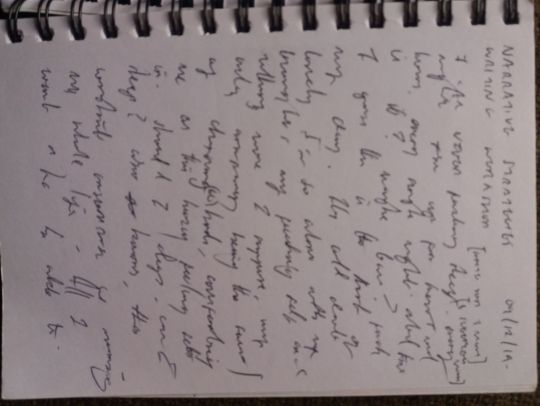
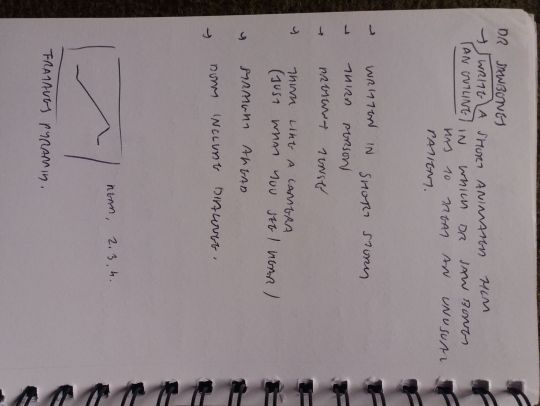
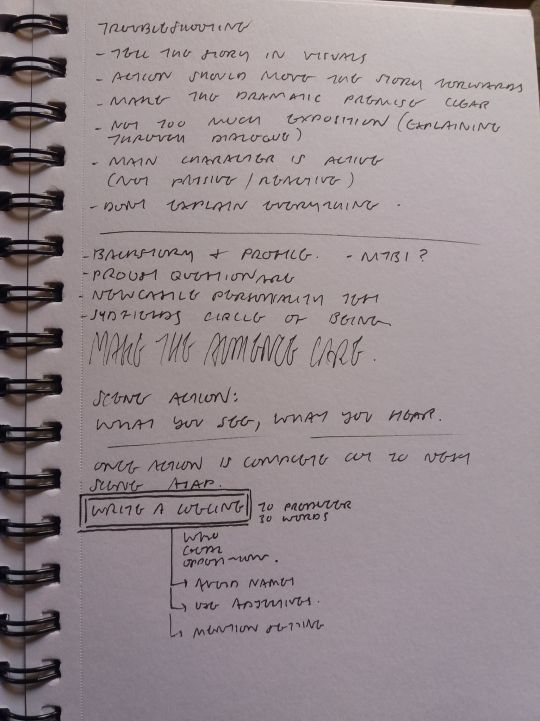
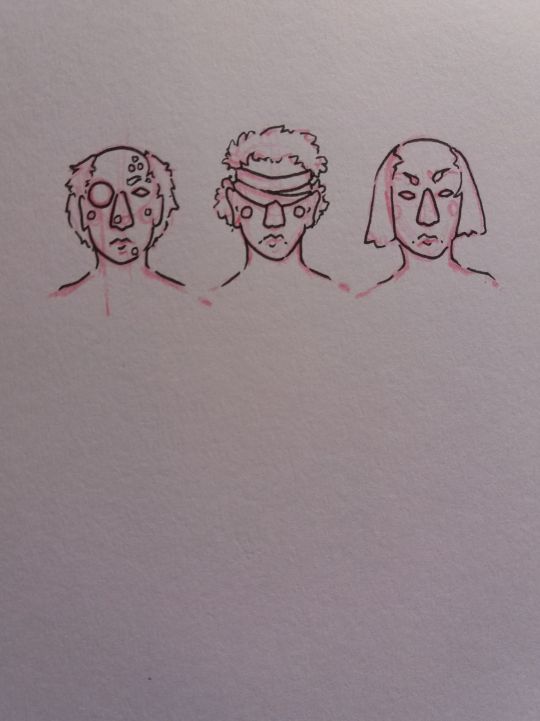
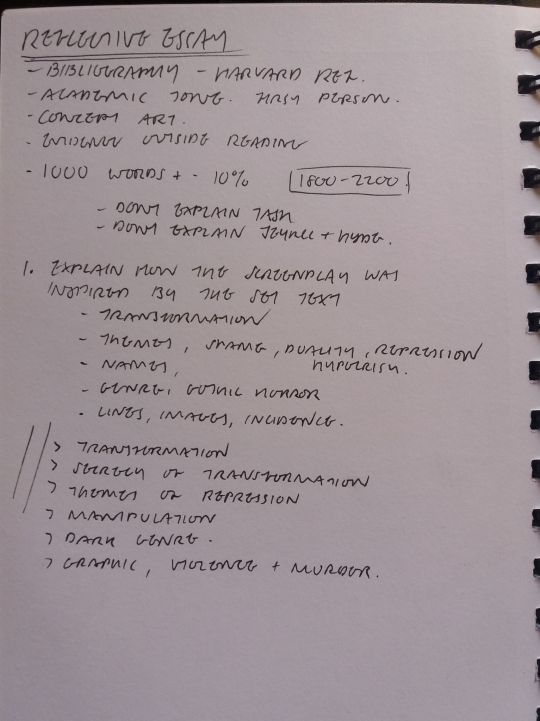
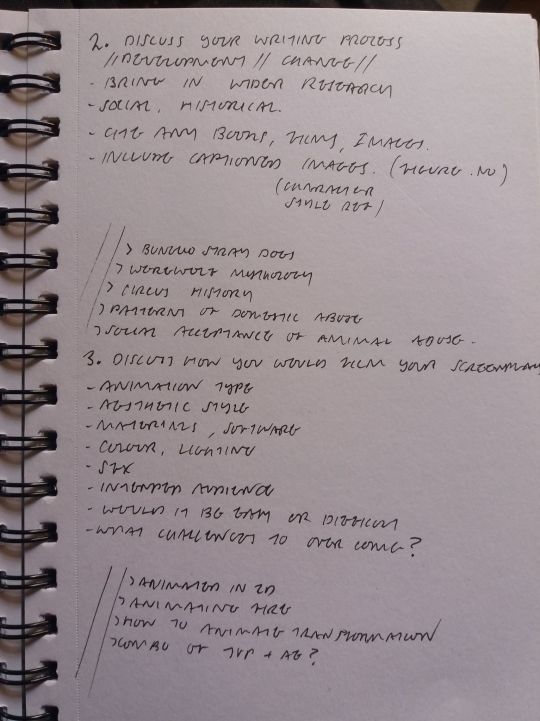
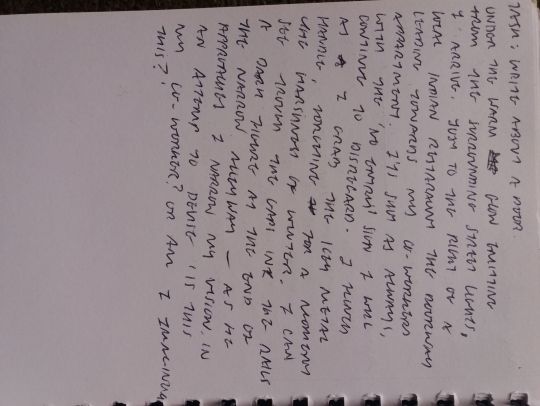
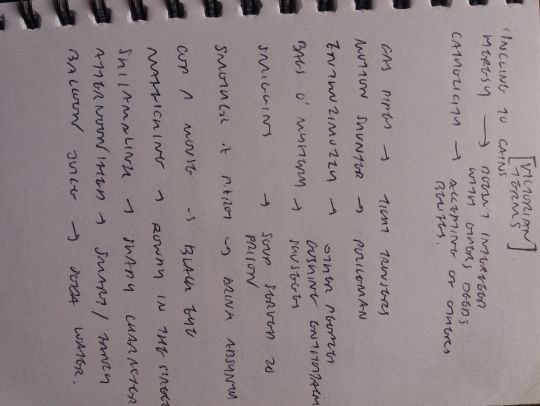
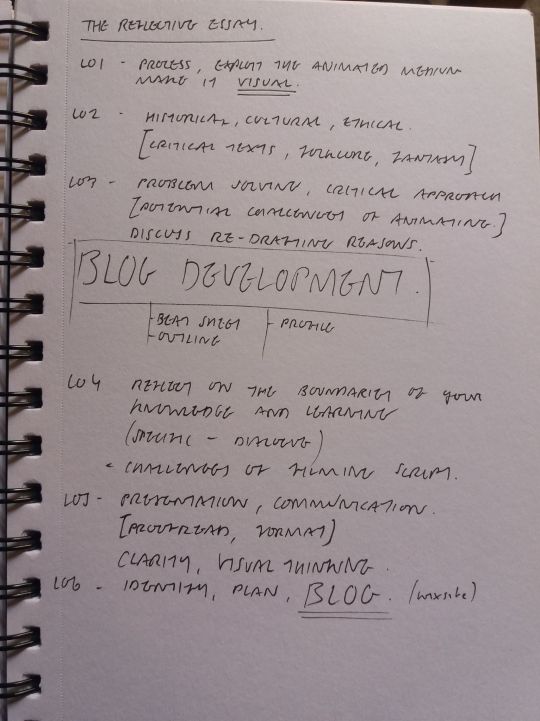


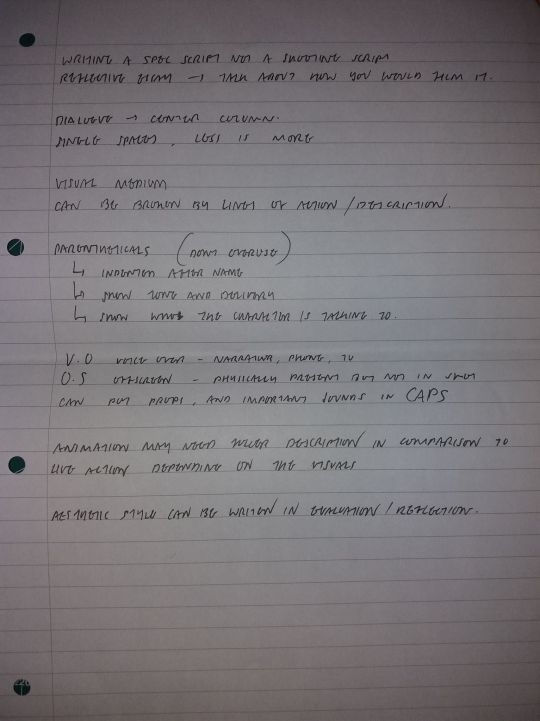


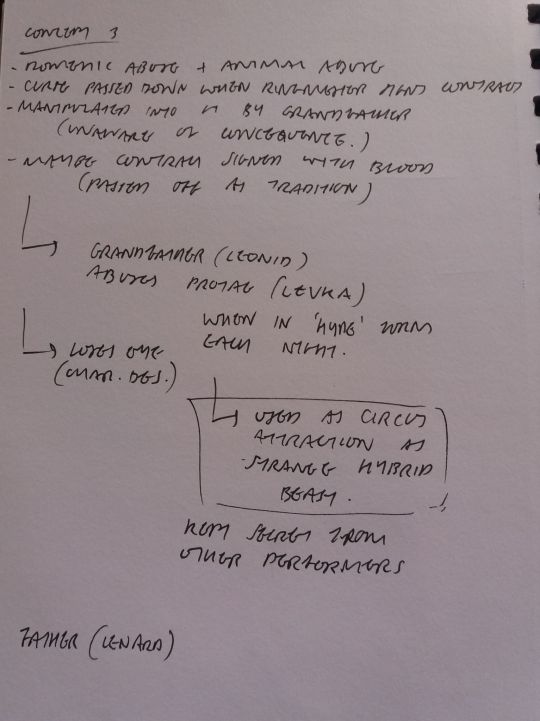
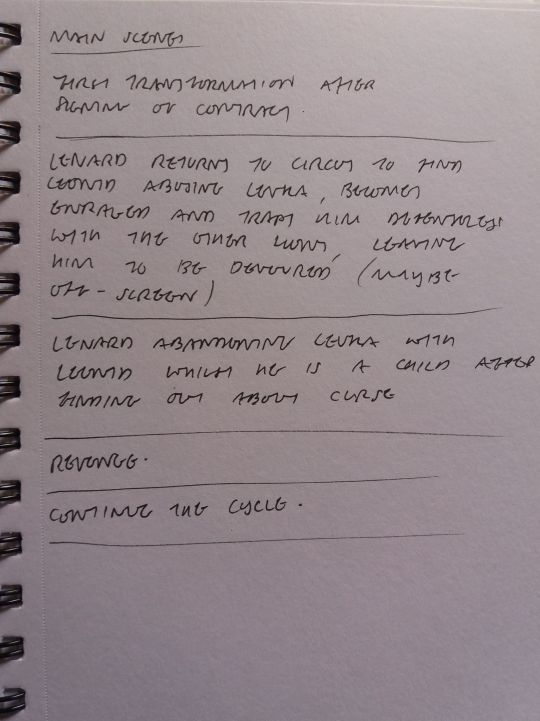
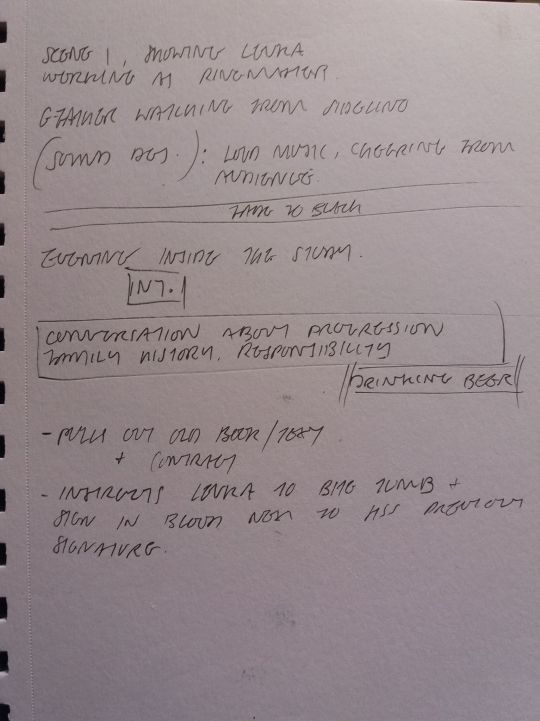
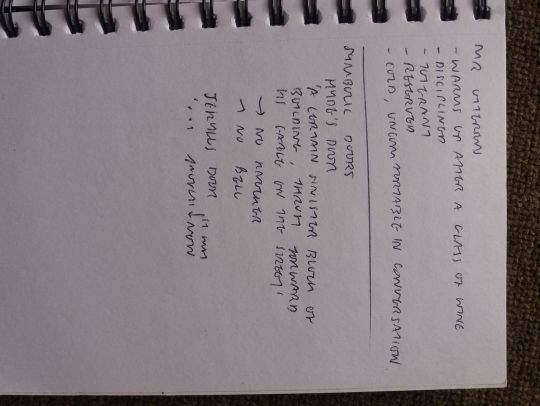

DoSomething.org. (n.d.). 11 Facts About Circus Animal Abuse. [online] Available at: https://www.dosomething.org/us/facts/11-facts-about-circus-animal-abuse [Accessed 17 Jan. 2020].
Burton, L. and Burton, L. (n.d.). The Cycle of Violence | Understanding Domestic Abuse. [online] The Hub | High Speed Training. Available at: https://www.highspeedtraining.co.uk/hub/domestic-abuse-facts/ [Accessed 28 Jan. 2020].
Carter, A., Acocella, J. (1979). The bloody chamber and other stories.
PETA. (n.d.). Circuses: Three Rings of Abuse | PETA. [online] Available at: https://www.peta.org/issues/animals-in-entertainment/animals-used-entertainment-factsheets/circuses-three-rings-abuse/ [Accessed 16 Jan. 2020].
Ed S, T. (2018). A psychology of the film. [online] Nature.com. Available at: https://www.nature.com/articles/s41599-018-0111-y [Accessed 14 Jan. 2020].
Garden, H., HowStuffWorks, Entertainment, Arts and Arts (n.d.). 10 Circus Acts That Have Withstood the Test of Time. [online] HowStuffWorks. Available at: https://entertainment.howstuffworks.com/arts/circus-arts/10-circus-acts-that-have-withstood-test-time10.htm [Accessed 12 Jan. 2020].
Hesse, H. and Creighton, B. (1927). Steppenwolf.
Historyofcircus.com. (n.d.). History of Circus - From Ancient to First Modern Circus. [online] Available at: http://www.historyofcircus.com/ [Accessed 14 Jan. 2020].
Industrial Scripts®. (n.d.). How to Write a Screenplay: Your 30-Step Guide | Industrial Scripts®. [online] Available at: https://industrialscripts.com/how-to-write-a-screenplay/?gclid=CjwKCAiAp5nyBRABEiwApTwjXvmP__1N07FvYcNZv4bT2bqZYKpFcGNCbe3Y2Z-oC2wz9H1bekZsdhoCigwQAvD_BwE [Accessed 25 Jan. 2020].
Kadel, J. (2020). 5 Famous Ideas That Came from Dreams - The Sleep Matters Club. [online] The Sleep Matters Club. Available at: https://www.dreams.co.uk/sleep-matters-club/5-famous-ideas-that-came-from-dreams/ [Accessed 28 Jan. 2020].
Mcleod, S. (2020). What are the most interesting ideas of Sigmund Freud? | Simply Psychology. [online] Simplypsychology.org. Available at: https://www.simplypsychology.org/Sigmund-Freud.html [Accessed 3 Feb. 2020].
Sarahmatthias.co.uk. (n.d.). Sawdust and Spangle-Land – a Brief History of the Circus in Germany | Sarah Matthias. [online] Available at: https://www.sarahmatthias.co.uk/articles/sawdust-and-spangle-land-a-brief-history-of-the-circus-in-germany/ [Accessed 14 Jan. 2020].
Stevenson, R. and Palpant, B. (1886). The strange case of Dr. Jekyll and Mr. Hyde.
Healthline. (2020). Stockholm Syndrome: Causes, Symptoms, Examples. [online] Available at: https://www.healthline.com/health/mental-health/stockholm-syndrome#in-todays-society [Accessed 14 Jan. 2020].
yes, therapy helps!. (2020). The 6 types of visual agnosia and its symptoms - yes, therapy helps!. [online] Available at: https://en.yestherapyhelps.com/the-6-types-of-visual-agnosia-and-its-symptoms-14828 [Accessed 21 Jan. 2020].
Tsay-Vogel, M. and Krakowiak, M. (2014). [online] ResearchGate. Available at: https://www.researchgate.net/publication/268079603_The_Dual_Role_of_Morally_Ambiguous_Characters_Examining_the_Effect_of_Morality_Salience_on_Narrative_Responses [Accessed 12 Jan. 2020].
HISTORY. (n.d.). Werewolf Legends. [online] Available at: https://www.history.com/topics/folklore/history-of-the-werewolf-legend [Accessed 30 Jan. 2020]
Annotation

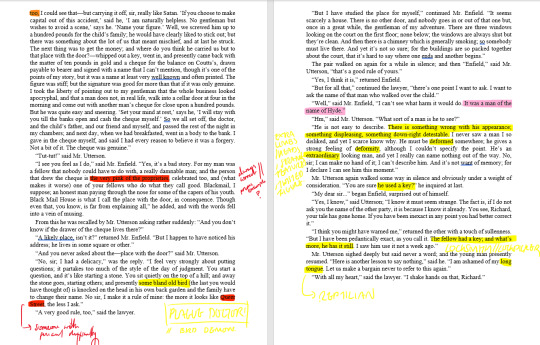
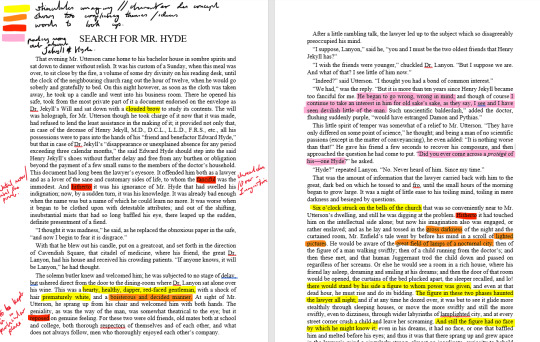
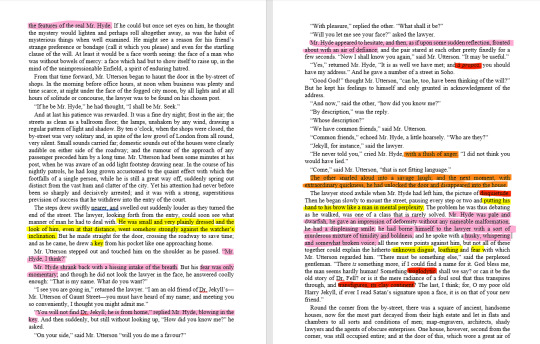

0 notes